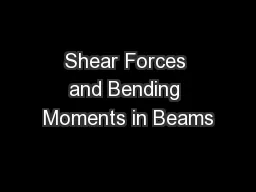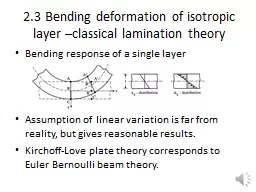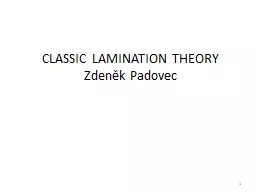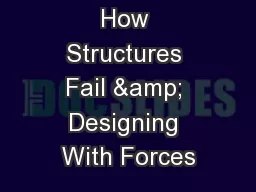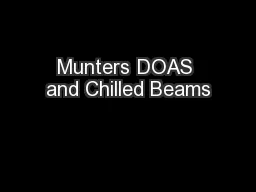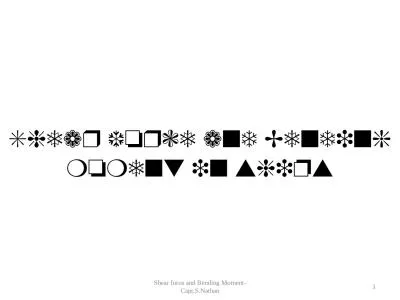PPT-Shear Forces and Bending Moments in Beams
Author : marina-yarberry | Published Date : 2017-03-22
Chapter 13 Strengths Introduction Beams are members that carry transverse loads and are subjected to bending Any member subject to bending is referred to as a beam
Presentation Embed Code
Download Presentation
Download Presentation The PPT/PDF document "Shear Forces and Bending Moments in Beam..." is the property of its rightful owner. Permission is granted to download and print the materials on this website for personal, non-commercial use only, and to display it on your personal computer provided you do not modify the materials and that you retain all copyright notices contained in the materials. By downloading content from our website, you accept the terms of this agreement.
Shear Forces and Bending Moments in Beams: Transcript
Download Rules Of Document
"Shear Forces and Bending Moments in Beams"The content belongs to its owner. You may download and print it for personal use, without modification, and keep all copyright notices. By downloading, you agree to these terms.
Related Documents

